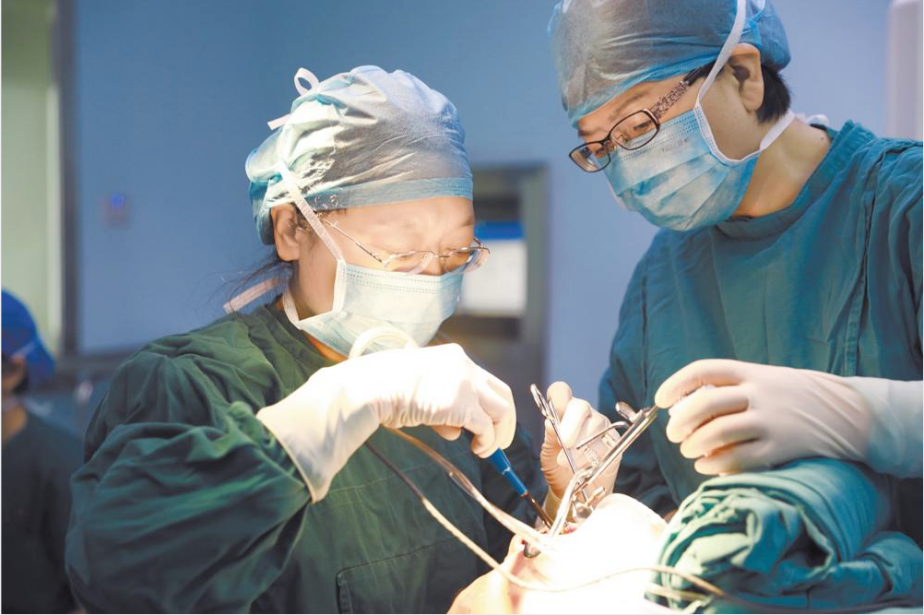Synovitis, acne, pustulosis, hyperostosis, osteitis (SAPHO) syndrome is a rare disorder of bones, joints and skin that falls into the category of rheumatic autoimmune diseases, marked by an incidence as low as 1/10,000 and limited clinical means of control. Based on comprehensive diagnosis and treatment by a multidisciplinary team, PUMCH has made a breakthrough, which is the discovery and clinical validation that tonsillectomy may be effective for SAPHO syndrome and can significantly improve patients’ bone pain and skin rash symptoms.
Due to the unknown etiology and pathogenesis, low incidence and lack of large-sample clinical studies, the treatment of SAPHO syndrome is mostly informed by case reports and single-center small-sample studies, hardly any guidelines or consensus as reference. Zhao Lidan, deputy chief physician of the Department of Rheumatology, PUMCH explained that for mild patients, NSAIDs are often used as the first-line drugs for symptomatic treatment to reduce patients’ pain; for moderate to severe patients who often respond to NSAIDs unsatisfactorily, second-line drugs such as glucocorticoids, antibiotics, immunosuppressants and bisphosphonates would be tried clinically. In recent years, biologics and small-molecule targeted drugs have been used to treat SAPHO syndrome with remarkable efficacy in some patients. However, the drugs are more expensive and also increase the risk of infection.
Some patients with refractory SAPHO syndrome have tried all kinds of treatments to no avail, or developed drug resistance shortly after the initial period of effectiveness and thus suffered from persistent symptoms that seriously compromise their quality of life and even cause pessimism to set in. Clinical examinations reveal that these patients often have concomitant tonsillitis, with persistent enlargement of the tonsils or even collection of pus, which are indications for tonsillectomy. Therefore, the Department of Rheumatology often refers such patients to the Department of Otolaryngology for further treatment.
Tonsillectomy has been proven by academia to be effective in the treatment of palmoplantar pustulosis and psoriasis. Given that the skin lesions in SAPHO syndrome are similar to that of palmoplantar pustulosis and psoriasis and that their pathological mechanisms may be similar, tonsillectomy might be able to alleviate the symptoms of SAPHO syndrome.
Wang Yi’s team from the Department of Otolaryngology retrospectively analyzed 44 well-documented cases of refractory SAPHO syndrome with recurrent tonsillitis treated with tonsillectomy. To prevent confounding from drug use, patients discontinued all medications after surgery. In the twelfth month of follow-up, the patients were found to have achieved a 62% and 77% remission of rash and bone pain respectively. Two years of follow-up of three patients reveals complete remission of rash and bone pain without recurrence.
“For some refractory patients, I would thoroughly observe their upper respiratory tract, including adenoids in the nasopharynx, and remove all lesions as completely as possible, so as to achieve a better clinical outcome,” said Wang Yi.

Wang Yi (left) was performing tonsillectomy for a patient with SAPHO syndrome
Reporter: Gan Dingzhu
Picture courtesy: Wang Yi
Translator: Liu Haiyan
Editor: Wang Yao
